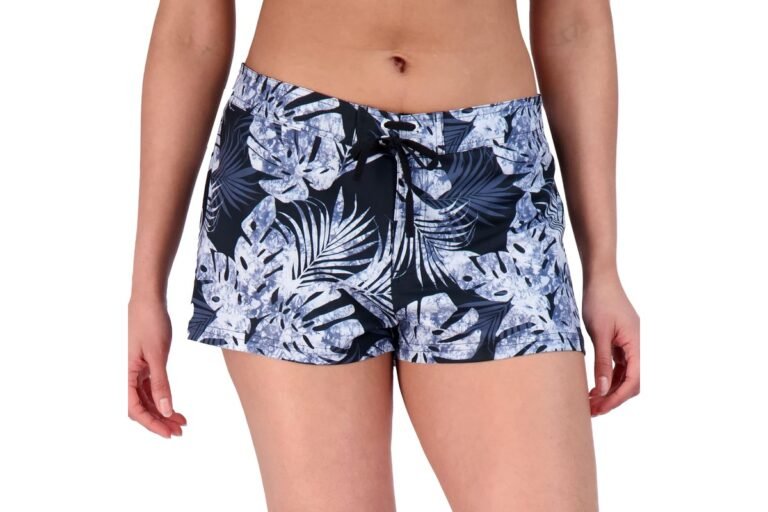Flexibility is a critical yet often underestimated component of athletic performance. Whether you’re a runner striving for a longer stride, a tennis player aiming for powerful serves, or a soccer enthusiast chasing the ball with agility, flexibility enables your body to move efficiently and safely. For amateur athletes, limited flexibility can hinder performance and increase injury risk. At Vigor Physiocare, we recognize the transformative role of sports physiotherapy in enhancing flexibility, helping athletes unlock their potential while reducing the strain on muscles and joints. This blog explores how sports physiotherapy improves flexibility, boosts performance, and supports long-term athletic health, ensuring you can pursue your sport with confidence.
The Importance of Flexibility in Sports
Flexibility refers to the ability of muscles and joints to move through their full range of motion (ROM). In sports, it directly impacts performance by:
-
Enhancing Movement Efficiency: Greater flexibility allows for smoother, more powerful movements, like a swimmer’s streamlined stroke or a gymnast’s fluid routines.
-
Reducing Injury Risk: Flexible muscles and joints absorb impact better, minimizing the risk of strains, sprains, or tears.
-
Improving Recovery: Flexible tissues recover faster from exertion, reducing soreness and stiffness.
-
Boosting Coordination: Better ROM enhances balance and coordination, critical for sports like basketball or martial arts.
However, many athletes, especially amateurs, struggle with tightness due to repetitive movements, inadequate stretching, or sedentary lifestyles. Tight hamstrings, for example, can limit a runner’s stride, while stiff shoulders can restrict a tennis player’s swing. Sports physiotherapy addresses these issues with targeted interventions, ensuring athletes move freely and perform optimally.
How Sports Physiotherapy Enhances Flexibility
Sports physiotherapy is a specialized field that combines biomechanical assessments, manual therapy, and tailored exercise programs to optimize athletic function. Unlike generic stretching routines, it focuses on the specific demands of each athlete and their sport, addressing flexibility holistically. At Vigor Physiocare, our sports physiotherapists use evidence-based techniques to improve flexibility, tailored to your unique needs. Here’s how:
1. Comprehensive Flexibility Assessments
The first step in enhancing flexibility is understanding your current limitations. Sports physiotherapy assessments evaluate muscle length, joint mobility, and movement patterns to identify areas of tightness or restriction. For example, a cyclist might have tight hip flexors from prolonged seated pedaling, while a swimmer may have restricted shoulder mobility from repetitive strokes.
At Vigor Physiocare, we use tests like the Thomas test (for hip flexibility) or shoulder ROM assessments to pinpoint restrictions. These insights guide personalized flexibility programs, ensuring targeted improvements that align with your sport.
2. Manual Therapy for Immediate Gains
Tight muscles or fascial restrictions can limit flexibility, even with regular stretching. Sports physiotherapy employs manual therapy techniques, such as:
-
Soft Tissue Massage: Releases muscle tension and improves tissue elasticity, ideal for tight calves in runners.
-
Myofascial Release: Targets the fascia to alleviate restrictions, enhancing overall mobility.
-
Joint Mobilizations: Gently moves joints to restore ROM, beneficial for stiff ankles or shoulders.
These hands-on techniques provide immediate improvements in flexibility, preparing the body for further stretching or exercise. At Vigor Physiocare, our sports physiotherapists combine manual therapy with education, teaching athletes self-release techniques like foam rolling to maintain gains between sessions.
3. Tailored Stretching Programs
Stretching is a cornerstone of flexibility, but generic routines often fall short. Sports physiotherapy prescribes sport-specific stretching programs, balancing static (held) and dynamic (moving) stretches to meet an athlete’s needs. For example:
-
Static Stretching: Post-workout stretches, like a hamstring hold, improve muscle length and reduce tightness.
-
Dynamic Stretching: Pre-workout movements, like leg swings or arm circles, prepare muscles for activity and enhance functional ROM.
A soccer player might focus on dynamic hip stretches to improve kicking range, while a yogi might emphasize static shoulder stretches for deeper poses. At Vigor Physiocare, we design stretching routines that integrate seamlessly into your training, maximizing flexibility and performance.
4. Strengthening for Functional Flexibility
Flexibility without strength can lead to instability, increasing injury risk. Sports physiotherapy pairs stretching with strengthening exercises to ensure functional flexibility—ROM supported by muscle control. For instance, a dancer with hypermobile joints might need core and glute strengthening to stabilize their flexibility during high kicks.
Key exercises include:
-
Eccentric Strengthening: Lengthening muscles under tension, like slow hamstring curls, to enhance flexibility and resilience.
-
Core Stability Drills: Planks or bird dogs to support spinal alignment during flexible movements.
-
Proprioceptive Training: Balance exercises to improve control within expanded ROM.
At Vigor Physiocare, we create balanced programs that combine flexibility and strength, ensuring athletes move powerfully and safely.
5. Correcting Biomechanical Imbalances
Tightness often stems from biomechanical imbalances, such as weak glutes causing compensatory hamstring tightness. Sports physiotherapy identifies these root causes through gait analysis or functional movement screens, addressing them with corrective exercises. For example, a runner with tight hip flexors might receive glute bridges to restore balance, reducing strain and improving stride length.
By correcting imbalances, sports physiotherapy enhances flexibility while preventing injuries like IT band syndrome or lower back pain. At Vigor Physiocare, we use video analysis to provide visual feedback, helping athletes understand and correct their movement patterns.
6. Promoting Recovery to Sustain Flexibility
Intense training can cause muscle soreness or microtears, reducing flexibility over time. Sports physiotherapy emphasizes recovery strategies to maintain and enhance ROM. Techniques include:
-
Foam Rolling: Self-myofascial release to reduce muscle tension.
-
Active Recovery: Low-intensity activities like swimming to promote blood flow.
-
Hydration and Nutrition: Supporting tissue repair with adequate water and protein.
At Vigor Physiocare, we educate athletes on recovery protocols, ensuring flexibility gains are sustained through consistent self-care.
7. Education for Long-Term Flexibility
Knowledge is power in maintaining flexibility. Sports physiotherapy empowers athletes with education on proper stretching techniques, warm-up routines, and body mechanics. For instance, learning to engage the core during stretches prevents compensatory strain, while understanding warm-up timing optimizes muscle readiness.
At Vigor Physiocare, we provide workshops and one-on-one sessions to teach athletes how to integrate flexibility practices into their daily routines, fostering lifelong habits for performance and health.
Flexibility’s Impact on Performance
Enhanced flexibility translates directly to better athletic performance. Consider these examples:
-
Runners: Increased hip and ankle flexibility lengthens stride, improving speed and efficiency while reducing knee stress.
-
Tennis Players: Flexible shoulders and hips enable powerful serves and fluid lateral movements, minimizing shoulder impingement risk.
-
Soccer Players: Greater hamstring and groin flexibility enhances kicking range and agility, preventing muscle tears during sprints.
At Vigor Physiocare, we’ve seen athletes transform their performance through flexibility-focused sports physiotherapy. A recreational marathoner, for instance, improved her 10K time after addressing tight hip flexors with manual therapy and dynamic stretches. Similarly, a volleyball player boosted his jump height by combining shoulder mobility drills with core strengthening, reducing arm strain during spikes.
Common Flexibility Challenges for Amateur Athletes
Amateur athletes face unique flexibility challenges, including:
-
Sedentary Lifestyles: Desk jobs tighten hip flexors and hamstrings, counteracting training.
-
Inconsistent Stretching: Skipping warm-ups or cool-downs leads to cumulative tightness.
-
Overtraining: Excessive workouts without recovery reduce muscle elasticity.
Sports physiotherapy addresses these by tailoring interventions to fit busy schedules and training demands. At Vigor Physiocare, we offer flexible appointment times and home exercise plans to support amateur athletes’ lifestyles.
Conclusion
Flexibility is a game-changer for athletic performance, enabling smoother movements, reducing injury risk, and enhancing recovery. Sports physiotherapy offers a comprehensive approach to improving flexibility through assessments, manual therapy, tailored stretching, strengthening, biomechanical corrections, recovery strategies, and education. At Vigor Physiocare, our expert sports physiotherapists are dedicated to helping amateur athletes unlock their flexibility potential, ensuring they perform better and stay safer in their sport. Whether you’re chasing a personal best or simply enjoying your favorite activity, enhanced flexibility through sports physiotherapy can elevate your game. Contact Vigor Physiocare today to schedule your assessment and start moving with greater ease and power!



